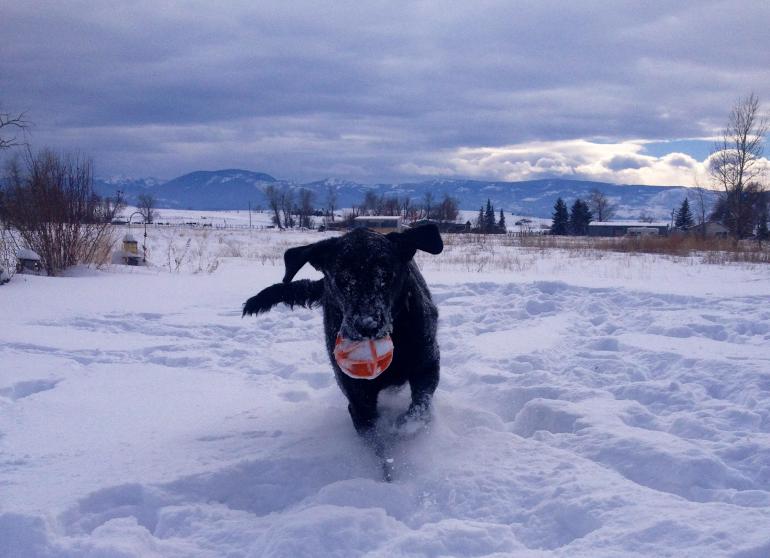Dog Safety: Cold-Weather Tips
Keeping your pooch safe come winter.
Do you ever wonder, “What temperature is too cold for my dog to be outside?” The answer varies depending on several factors. A lot has been written about gear, workouts, and calories, and how they can vary for people of all shapes and sizes… dogs are no different.
Four words to remember this time of year are breed, acclimation, housing, and nutrition.
Breed means body type. Body size, body fat percentage, hair density, and hair length make huge differences in wintertime safety. I don’t expect my German Shorthair Pointer, May, to be able to brave 10-below temps or 20-inch powder, but a larger, heavier, hairier dog can with ease. I certainly wouldn’t recommend that any small, short-haired, or juvenile dog stay outside overnight, either—no matter how well we attempt to acclimate, house, or feed them.
Acclimation means a slow, consistent transition of warmer, fall weather to colder, early winter weather. We do this by exposing our dogs to cooler temperatures consistently, allowing their physiology to convert to “fat storing” stage and their coats to grow. If we send them out some days but keep them indoors on others, we are asking for trouble. They won’t be able to properly protect themselves from the wind and cold of winter.
For dogs that crave cold and sleep in the elements all year, housing is very important. Some dogs can brave the snow bank with ease, but for most, some shelter from the wind is crucial. I recommend an insulated house with a two-door system facing away from the prevailing wind and that is just big enough for them to stand up and turn around inside. A two-door system is one in which a dog has to go through two openings spaced apart from one another in order to get inside. This minimizes direct weather from entering their chalet.
Dry bedding and some small amount of ventilation is also critical. An insulated floor off the ground is just as important for dogs as a Thermarest is for us—but remember to use dry bedding. I stay away from fabrics and lean toward straw and similar materials. Humidity can build up inside their houses as well and can condense easily inside. If the doghouse needs a heat lamp to make the dog comfortable, it is likely too cold for the dog to be out.
Food is the fuel that can separate milers from marathoners—or for your dog, safe from unsafe. In winter, for outdoor-active dogs, I usually increase the food volume but water is the most overlooked component to a healthy dog in wintertime. Dogs, like us, are made up of mostly water, and dehydration can severely decrease a dog’s ability to brave the elements.
Dr. Jon Stites practices veterinary medicine at 360 Pet Medical on E. Main Street.










